Why Chicken Gyoza Deserves a Spot in Your Kitchen
If you’ve ever sat in a Japanese restaurant and heard the satisfying sizzle of dumplings hitting a hot pan, chances are you’ve met the irresistible world of gyoza. Traditionally made with pork, gyoza are savory Japanese dumplings wrapped in thin dough, pan-fried until crispy on the bottom, and steamed to juicy perfection. But swap in chicken, and you get a lighter, equally flavorful twist that’s perfect for home cooks and healthier eaters alike.
Chicken gyoza offers a leaner protein base while keeping that satisfying umami bite. The filling is usually a blend of finely minced chicken, cabbage, green onions, garlic, ginger, and seasonings, all hugged inside a delicate wrapper. They can be pan-fried for a crisp edge, steamed for softness, or even boiled in soups, versatile enough for a weeknight dinner or a party platter.
And while gyoza may look intricate, making them at home is surprisingly doable once you know the folding method and the right cooking techniques. This guide will walk you through every step from selecting ingredients and shaping dumplings to cooking and serving them with mouthwatering dipping sauces.
If you enjoy Japanese and Asian-inspired dishes, you might also like trying Mediterranean chicken gyros for a fusion twist or crispy, flavorful longhorn Parmesan crusted chicken as another delicious main.
Table of Contents
Table of Contents
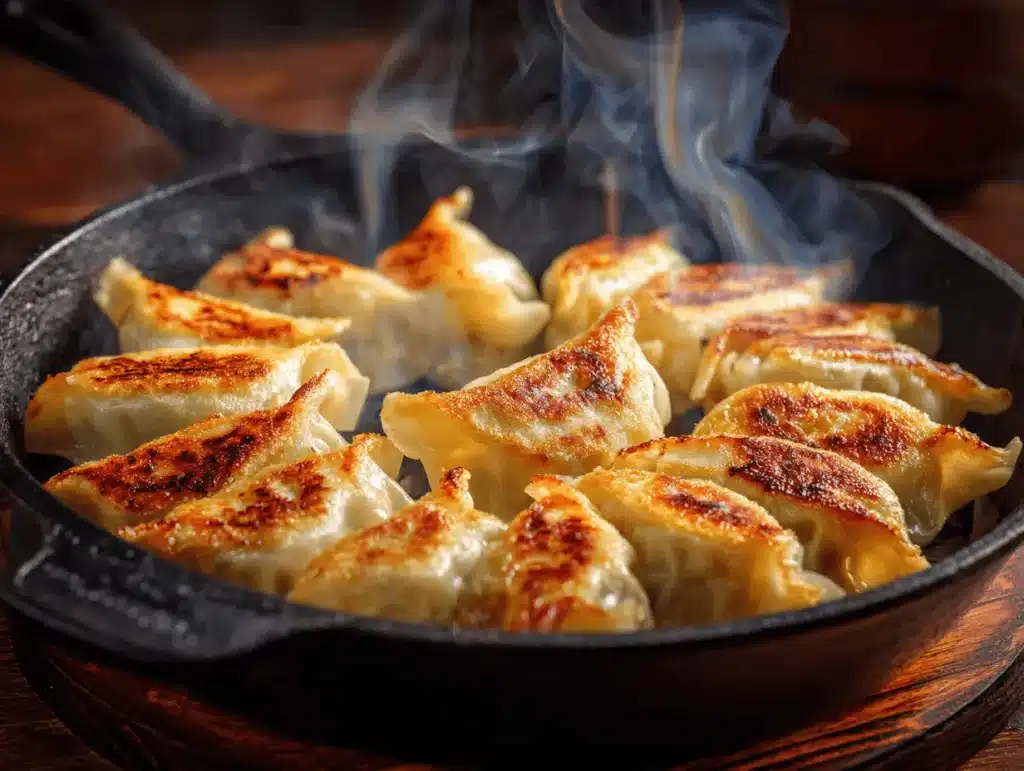
What is Chicken Gyoza?
Gyoza originated as a Japanese adaptation of Chinese jiaozi dumplings. After World War II, returning Japanese soldiers who had tasted dumplings in China brought the concept home, tweaking the flavors to suit Japanese tastes. The Japanese version tends to have a thinner wrapper, a finer filling texture, and a more pronounced garlic and ginger aroma.
While pork is the traditional meat of choice, chicken has become a popular alternative for its lighter taste and lower fat content. This makes chicken gyoza perfect for those looking to reduce red meat intake or simply switch things up. It’s also a fantastic base for experimenting with new flavors, from sesame-infused fillings to spicy chili dips.
A well-made chicken gyoza delivers:
- A crisp, golden bottom
- A soft, slightly chewy wrapper
- A juicy, flavorful filling with balanced seasoning
- A dipping sauce that complements without overpowering
In Japan, gyoza is often enjoyed with ramen, rice, or as a side dish at izakayas (Japanese pubs). At home, they’re equally great as an appetizer, snack, or main course, and they freeze beautifully for quick cooking later.
Ingredients for Perfect Chicken Gyoza
The secret to a juicy, flavorful chicken gyoza is starting with the right ingredients. While the recipe itself is simple, the freshness and balance of each component will make the difference between good dumplings and unforgettable ones.
1. Chicken Filling Essentials
- Ground Chicken Thighs: Chicken thighs are juicier than breast meat, which can dry out quickly. A mix of thigh and breast can also work if you want to keep the fat content low while maintaining tenderness.
- Cabbage: Finely chopped Napa cabbage is the classic choice. It adds sweetness and moisture to the filling. Always salt and squeeze out excess water before mixing so the wrappers don’t get soggy.
- Green Onions (Scallions): These add a mild onion flavor and a pop of color.
- Garlic and Ginger: The aromatic heart of gyoza. Freshly grated ginger and minced garlic will give a more vibrant taste than powdered forms.
- Soy Sauce & Sesame Oil: For that deep umami flavor and a hint of nuttiness.
- Salt & White Pepper: White pepper is traditional and milder than black pepper, keeping the flavor profile light and clean.
2. Optional Flavor Boosters
- Miso Paste: A teaspoon can add depth to the filling.
- Shiitake Mushrooms: Finely chopped, they contribute an earthy richness.
- Chili Flakes: For a gentle kick.
3. Gyoza Wrappers: Homemade vs. Store-Bought
- Homemade Wrappers: Made with flour, water, and a pinch of salt, homemade wrappers are softer and easier to pleat but require extra prep time.
- Store-Bought Wrappers: Available in most Asian grocery stores. Look for thin, round wrappers labeled “gyoza” or “potsticker.” Keep them covered with a damp cloth while working to prevent drying.
You can also adapt wrapping methods used in jalapeno popper stuffed chicken to get creative with your fillings and presentation.
4. Choosing Quality Chicken
For the juiciest filling, opt for freshly ground chicken from a butcher or grind it yourself at home. If using pre-packaged chicken, make sure it’s well within the sell-by date and has a pink, fresh appearance.
5. Key Ingredient Ratios
For a balanced batch of about 30 gyoza:
- 300g (10.5 oz) ground chicken
- 1 cup finely chopped cabbage (squeezed dry)
- 2 green onions, chopped
- 2 cloves garlic, minced
- 1 tsp grated ginger
- 1 tbsp soy sauce
- 1 tsp sesame oil
- Salt and pepper to taste
When these ingredients come together, you’ll have a mixture that’s flavorful, moist, and easy to handle when wrapping.
For a comforting pairing, consider serving them alongside creamy chicken and broccoli fettuccine alfredo for a hearty dinner.
How to Make Chicken Gyoza from Scratch
Making chicken gyoza at home might seem intimidating at first, but once you get into the rhythm of filling, folding, and cooking, it becomes almost meditative. Plus, the reward of biting into a dumpling you made from scratch is hard to beat.
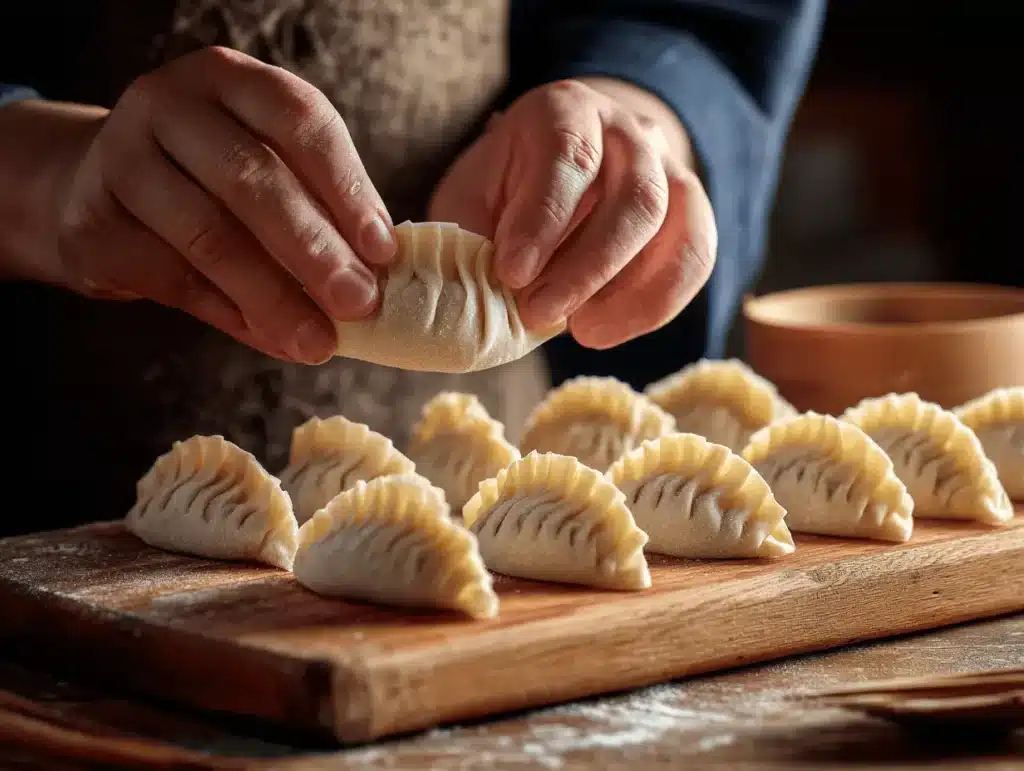
Step 1: Prepare the Filling
- In a large mixing bowl, combine:
- Ground chicken
- Squeezed-dry Napa cabbage
- Chopped green onions
- Minced garlic
- Grated ginger
- Soy sauce
- Sesame oil
- Salt and white pepper
- Mix with your hands or a spoon until just combined. Avoid overmixing, as this can make the filling dense.
Pro tip: Let the mixture rest for 10–15 minutes in the fridge so the flavors meld and the texture firms up, making it easier to wrap.
Step 2: Set Up Your Wrapping Station
- Wrappers: Keep them under a damp cloth to prevent drying.
- Small bowl of water: For sealing the edges.
- Clean surface or tray: Lightly dusted with flour or cornstarch to keep the gyoza from sticking.
Step 3: Fold the Gyoza
- Place a wrapper in your palm and add 1 teaspoon of filling to the center.
- Dip your finger in water and moisten the edge of the wrapper halfway around.
- Fold the wrapper in half over the filling, then pleat one side while pressing it into the flat side to seal.
- Set finished dumplings on the prepared tray.
If you want inspiration for working with stuffed dishes, check out how creative fillings are handled in chicken pot pie with cream of chicken soup. It’s all about balancing filling moisture and structure.
Step 4: Storing Before Cooking
If you’re not cooking them immediately:
- Place the tray in the freezer until the dumplings are firm.
- Transfer to a freezer-safe bag or container.
- Cook straight from frozen without thawing.
Step 5: Batch Cooking
For parties or meal prep, double or triple the recipe. Lay gyoza in single layers for freezing, so they don’t stick together. Having a batch ready means you can have homemade dumplings in minutes, any time.
A hearty soup like marry me chicken soup pairs perfectly with gyoza for a cozy, filling meal.
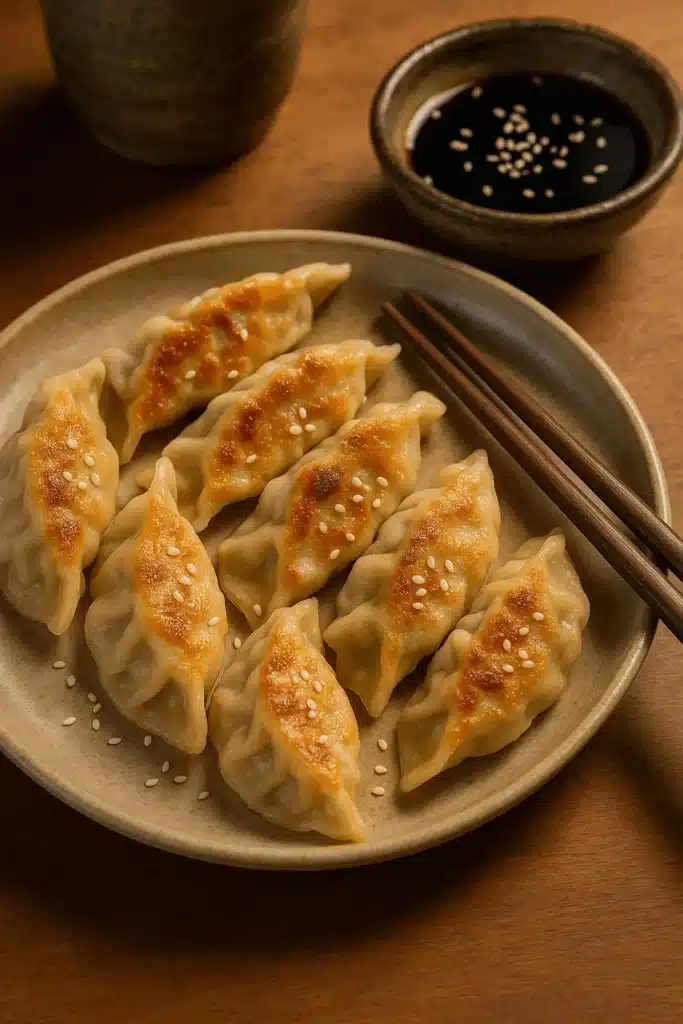
Cooking Methods for Chicken Gyoza
One of the best things about chicken gyoza is that they’re incredibly versatile when it comes to cooking. You can go for a crispy bite, a tender steamed version, or even a soft, soup-filled dumpling. Each method brings out a different side of the gyoza’s flavor and texture.
1. Pan-Frying (The Classic Potsticker Method)
This is the most popular method, giving you that beautiful contrast of crispy bottoms and juicy filling.
How to Pan-Fry:
- Heat 1 tablespoon of oil in a large nonstick skillet over medium-high heat.
- Arrange gyoza in a single layer, flat side down.
- Cook for 2–3 minutes until the bottoms turn golden brown.
- Carefully pour in 1/4 cup water, cover immediately, and let steam for 4–5 minutes.
- Remove the lid and cook another 1–2 minutes until the water evaporates and the bottoms crisp up again.
Pair pan-fried gyoza with a vibrant side like chicken and yellow rice for a satisfying plate.
2. Steaming
Steaming is the gentlest cooking method, preserving the dumpling’s juiciness without crisping the wrapper.
How to Steam:
- Prepare a steamer basket lined with parchment paper or cabbage leaves to prevent sticking.
- Arrange gyoza so they’re not touching.
- Steam over boiling water for 8–10 minutes.
Steamed gyoza work wonderfully as part of a light lunch or alongside recipe chicken Mozambique for a flavorful, multi-dish dinner.
3. Boiling
Boiling gives you soft dumplings that are perfect for soups or broths.
How to Boil:
- Bring a large pot of water to a boil.
- Add gyoza in batches, stirring gently to prevent sticking.
- When they float to the top, cook for 1–2 minutes more, then remove.
4. Air-Frying (For a Lighter Crunch)
If you want crispy gyoza with less oil, air-frying is a solid option.
How to Air-Fry:
- Lightly spray both sides of the dumplings with oil.
- Arrange in the air fryer basket in a single layer.
- Cook at 375°F (190°C) for 8–10 minutes, flipping halfway through.
5. Common Mistakes to Avoid
- Overfilling: Leads to tearing.
- Not sealing tightly: Causes leakage during cooking.
- Crowding the pan: Prevents even cooking.
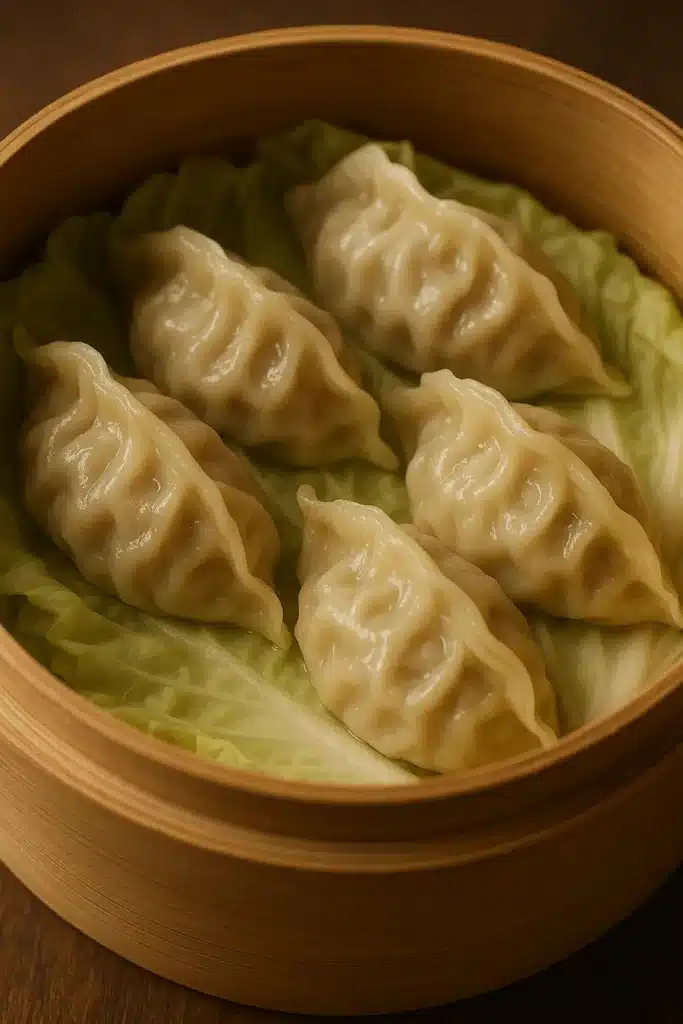
Dipping Sauces for Chicken Gyoza
A plate of perfectly cooked chicken gyoza isn’t complete without a sauce to match. The dipping sauce is where you can play with flavor contrasts: salty and tangy, spicy and sweet, or nutty and aromatic. A good sauce should complement the filling without overpowering it.
1. Classic Soy-Vinegar with Chili Oil
This is the most traditional Japanese gyoza dipping sauce.
Ingredients:
- 2 tbsp soy sauce
- 2 tbsp rice vinegar
- 1 tsp chili oil (optional)
Instructions:
- Mix soy sauce and rice vinegar in equal parts.
- Add chili oil for heat.
- Serve in small dipping bowls.
2. Sweet-Savory Sesame Sauce
A creamier, nutty option that works beautifully with chicken fillings.
Ingredients:
- 1 tbsp sesame paste or tahini
- 2 tbsp soy sauce
- 1 tbsp rice vinegar
- 1 tsp sugar
- 1 tbsp warm water
Instructions:
- Whisk sesame paste with warm water until smooth.
- Add soy sauce, vinegar, and sugar.
- Adjust thickness with more water if needed.
For a complete Asian-inspired meal, serve gyoza with Mediterranean chicken gyros as a main course; both dishes shine when dipped in bold sauces.
3. Ponzu Citrus Sauce
Ponzu is a soy-based sauce with a bright citrus twist.
Ingredients:
- 3 tbsp ponzu sauce
- 1 tsp grated ginger
- A few slices of green onion
Instructions:
- Combine all ingredients in a small bowl.
- Let it sit for 5 minutes before serving to meld flavors.
4. Sweet Chili-Lime Sauce
Perfect for those who like a sweeter, tangier kick.
Ingredients:
- 2 tbsp sweet chili sauce
- Juice of 1/2 lime
- 1 tsp soy sauce
Instructions:
- Mix all ingredients in a bowl.
- Serve immediately.
This sweet chili-lime combo pairs wonderfully with creamy dishes like chicken and broccoli fettuccine alfredo for a fusion feast.
Creative Variations of Chicken Gyoza
One of the best things about chicken gyoza is how easy it is to adapt them to different tastes, dietary needs, and cooking styles. Once you’ve mastered the basics, the possibilities are endless.
1. Herb-Infused Chicken Gyoza
Add fresh herbs like cilantro, basil, or parsley to your chicken filling for a burst of freshness. Herb-infused Japanese chicken gyoza pairs beautifully with light, citrusy dipping sauces.
2. Spicy Chicken Gyoza
Mix in chopped chili peppers or a spoonful of gochujang (Korean chili paste) for heat. This variation turns regular homemade chicken gyoza into a fiery appetizer that’s perfect for spice lovers.
3. Gluten-Free Chicken Gyoza
Use rice flour or tapioca flour wrappers for a gluten-free twist. While the texture is slightly different, these gluten-free chicken gyoza still deliver juicy fillings and crisp edges when pan-fried.
For a hearty meal, serve them with chicken and yellow rice for a wholesome dinner.
4. Air-Fried Chicken Gyoza
Air frying is a lighter alternative to pan-frying. Simply brush the crispy chicken gyoza with a little sesame oil and air-fry until golden. They come out crunchy without excess oil.
5. Fusion Chicken Gyoza
Experiment with fillings inspired by other cuisines:
- Mediterranean chicken gyoza with feta, spinach, and sun-dried tomatoes.
- Thai chicken gyoza with lemongrass, kaffir lime, and coconut cream.
- Mexican chicken gyoza with corn, black beans, and chipotle seasoning.
If you enjoy global flavors, you’ll also love the recipe for chicken Mozambique for its vibrant spices.
By customizing the fillings, you can make chicken gyoza a signature dish in your home, one that surprises and delights every time.
Tips for Freezing and Meal Prep for Chicken Gyoza
One of the best things about chicken gyoza is that they freeze beautifully, making them perfect for quick meals, snacks, or last-minute dinner guests. With the right techniques, your homemade chicken gyoza will taste just as fresh after weeks in the freezer as they did on the day you made them.
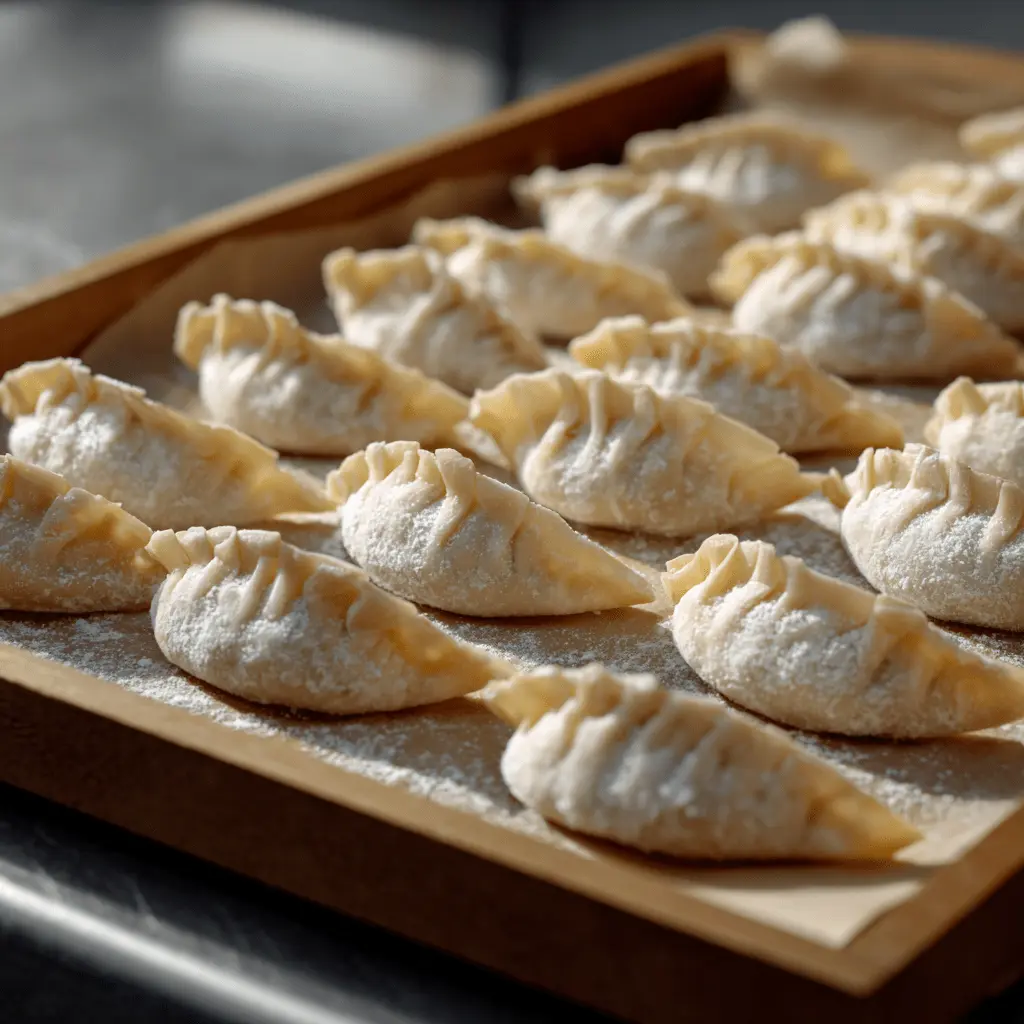
1. Freezing Chicken Gyoza Without Sticking
- Arrange uncooked chicken gyoza in a single layer on a parchment-lined baking sheet.
- Make sure dumplings aren’t touching to prevent them from sticking together.
- Freeze for 1–2 hours until firm, then transfer to an airtight freezer bag or container.
For safe freezer storage guidelines, see the USDA’s freezing and food safety recommendations.
2. Cooking Chicken Gyoza from Frozen
You don’t need to thaw frozen chicken gyoza before cooking:
- Pan-Frying: Follow the potsticker method, adding 1–2 extra minutes to the steaming step.
- Steaming: Steam for 12–14 minutes instead of 8–10.
- Air-Frying: Cook at 375°F (190°C) for 10–12 minutes, flipping halfway through.
For safe cooking temperatures, the USDA’s poultry temperature chart confirms chicken should reach 165°F (74°C) internally.
3. Batch Cooking for Busy Weeks
If you’re making a large batch of chicken gyoza, freeze them in family-sized portions. This makes weekday dinners easy, just grab a bag from the freezer and cook without extra prep.
Pair frozen gyoza with marry me chicken soup for a warm, hearty meal.
4. Shelf Life of Frozen Chicken Gyoza
When stored properly, chicken gyoza can last up to 2 months in the freezer without losing quality. Always label bags with the date to keep track of freshness.
The FoodSafety.gov storage chart offers a full breakdown of how long different foods can be kept frozen.
Health and Nutrition Benefits of Chicken Gyoza
Chicken gyoza isn’t just delicious; it can also be a balanced, protein-rich option when made with fresh, quality ingredients. By choosing lean ground chicken, fresh vegetables, and light cooking methods, you can turn homemade chicken gyoza into a meal that’s both satisfying and nutritious.
1. High Protein, Lower Fat
Chicken is naturally lower in saturated fat than pork, making chicken gyoza a leaner dumpling choice. This can be a good option for those watching their cholesterol or overall fat intake.
According to the USDA FoodData Central, a 3-ounce serving of cooked ground chicken thigh contains around 19g of protein, supporting muscle health and satiety.
2. Nutrient Boost from Vegetables
The cabbage, garlic, and ginger in Japanese chicken gyoza add dietary fiber, vitamin C, antioxidants, and digestive benefits. Cabbage is particularly rich in vitamin K, while ginger can help reduce inflammation.
3. Portion Control Friendly
Because chicken gyoza is typically served in small pieces, it’s easy to control portions. Pairing 4–6 gyoza with a side of vegetables or salad makes for a balanced plate without excess calories.
If you want a wholesome pairing, try them with chicken and broccoli fettuccine alfredo for a protein-and-veggie-packed dinner.
4. Flexible for Dietary Needs
Chicken gyoza can be customized for low-sodium diets by reducing soy sauce or using low-sodium alternatives. Gluten-free wrappers make them safe for people with gluten intolerance.
The American Heart Association’s sodium guidelines recommend staying under 1,500 mg daily for most adults, so adjusting seasonings can make gyoza even healthier.
5. Healthier Cooking Options
Steaming or air-frying chicken gyoza instead of deep-frying reduces added fats and calories while keeping the filling juicy.
For another flavorful yet lighter dish, try the recipe for chicken Mozambique for a spice-packed main course.
Print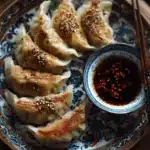
Chicken Gyoza: The Ultimate Guide to Juicy Japanese Dumplings
- Total Time: 30 mins
- Yield: 30 gyoza
Description
Juicy, flavorful chicken gyoza with cabbage, garlic, and ginger, wrapped in delicate dumpling skins and cooked until crispy and tender.
Ingredients
300g (10.5 oz) ground chicken thighs
1 cup finely chopped Napa cabbage (squeezed dry)
2 green onions, chopped
2 cloves garlic, minced
1 tsp grated ginger
1 tbsp soy sauce
1 tsp sesame oil
Salt and white pepper to taste
Gyoza wrappers
Oil for frying
Water for steaming
Instructions
1. In a large bowl, combine ground chicken, cabbage, green onions, garlic, ginger, soy sauce, sesame oil, salt, and pepper. Mix until just combined.
2. Prepare a clean surface and keep wrappers covered with a damp cloth.
3. Place 1 tsp filling in the center of each wrapper. Moisten one half of the edge with water.
4. Fold in half, pleating one side and sealing the edges.
5. Heat oil in a nonstick pan over medium-high. Arrange gyoza flat side down, cook until golden brown.
6. Add 1/4 cup water, cover, and steam for 4–5 minutes.
7. Uncover and cook 1–2 more minutes to re-crisp the bottoms.
8. Serve hot with dipping sauce of your choice.
Notes
You can freeze uncooked gyoza in a single layer, then store in airtight bags for up to 2 months.
Cook frozen gyoza without thawing, adding a few extra minutes to the steaming time.
- Prep Time: 20 mins
- Cook Time: 10 mins
- Category: Appetizer
- Method: Pan-Fry & Steam
- Cuisine: Japanese
Mastering Chicken Gyoza at Home
Chicken gyoza is more than just a delicious Japanese appetizer; it’s a versatile, freezer-friendly, and healthier alternative to pork dumplings that you can customize to your taste. From the classic pan-fried method to lighter steamed or air-fried versions, there’s a cooking style for every preference.
By choosing lean ground chicken, fresh vegetables, and flavorful seasonings, your homemade chicken gyoza will be both satisfying and nourishing. You can prep them in bulk, freeze them for later, and whip up dipping sauces that elevate every bite. Whether you stick to the traditional soy-vinegar blend or experiment with fusion flavors, you’re in full control of the taste experience.
So, the next time you want a restaurant-quality dumpling at home, grab your wrappers, prepare your filling, and follow these tips, your kitchen will soon smell like your favorite Japanese izakaya. And who knows? Chicken gyoza might just become your signature dish.
If you’re looking for other comforting, flavor-packed recipes, try longhorn parmesan crusted chicken or chicken and yellow rice for more crowd-pleasing meals.
Frequently Asked Questions About Chicken Gyoza
1. What is the difference between chicken gyoza and chicken dumplings?
While both are stuffed dough parcels, chicken gyoza is a Japanese-style dumpling with a thinner wrapper, finer filling texture, and a more pronounced garlic and ginger flavor. Chinese dumplings often have thicker wrappers and more variety in cooking methods.
2. Can I make chicken gyoza ahead of time?
Yes. You can prepare chicken gyoza up to the wrapping stage and refrigerate them for 4–6 hours before cooking. For longer storage, freeze them on a tray and transfer to an airtight bag.
3. How do I stop chicken gyoza from sticking to the pan?
Make sure to use a nonstick pan and heat oil before adding the dumplings. Avoid moving them for the first 2–3 minutes so a crust forms. Then add water, cover, and steam.
4. Can chicken gyoza be made gluten-free?
Absolutely. Use gluten-free gyoza wrappers or rice flour wrappers, and check that soy sauce or seasoning is labeled gluten-free.
5. What dipping sauce goes best with chicken gyoza?
The classic is a mix of soy sauce, rice vinegar, and chili oil. You can also try ponzu for a citrus twist or a sweet chili-lime sauce for a tangier kick.
6. How long does frozen chicken gyoza last?
When stored properly in an airtight container or freezer bag, chicken gyoza can last up to 2 months in the freezer without losing quality.
For safe freezing and reheating practices, see the USDA Food Safety Freezing Guidelines.

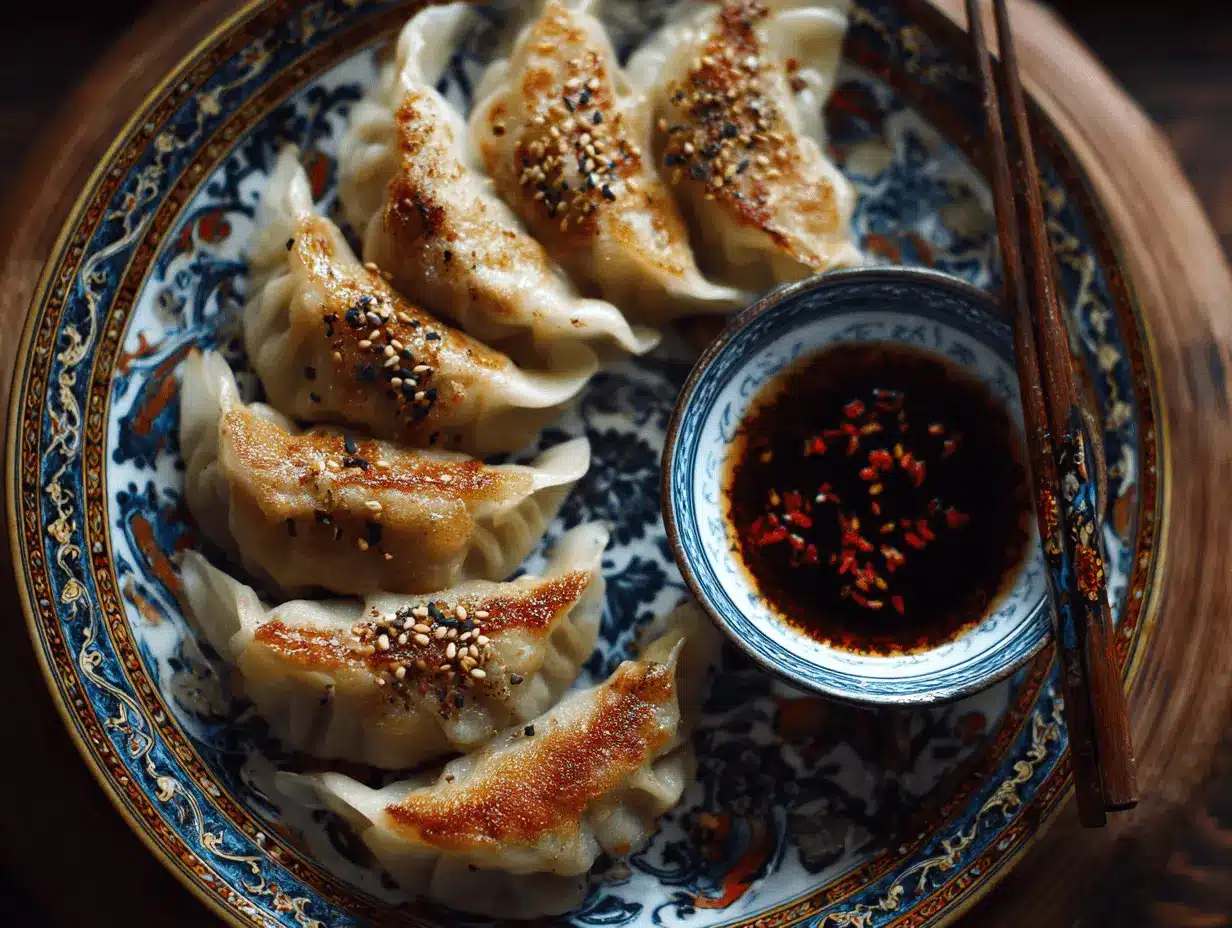
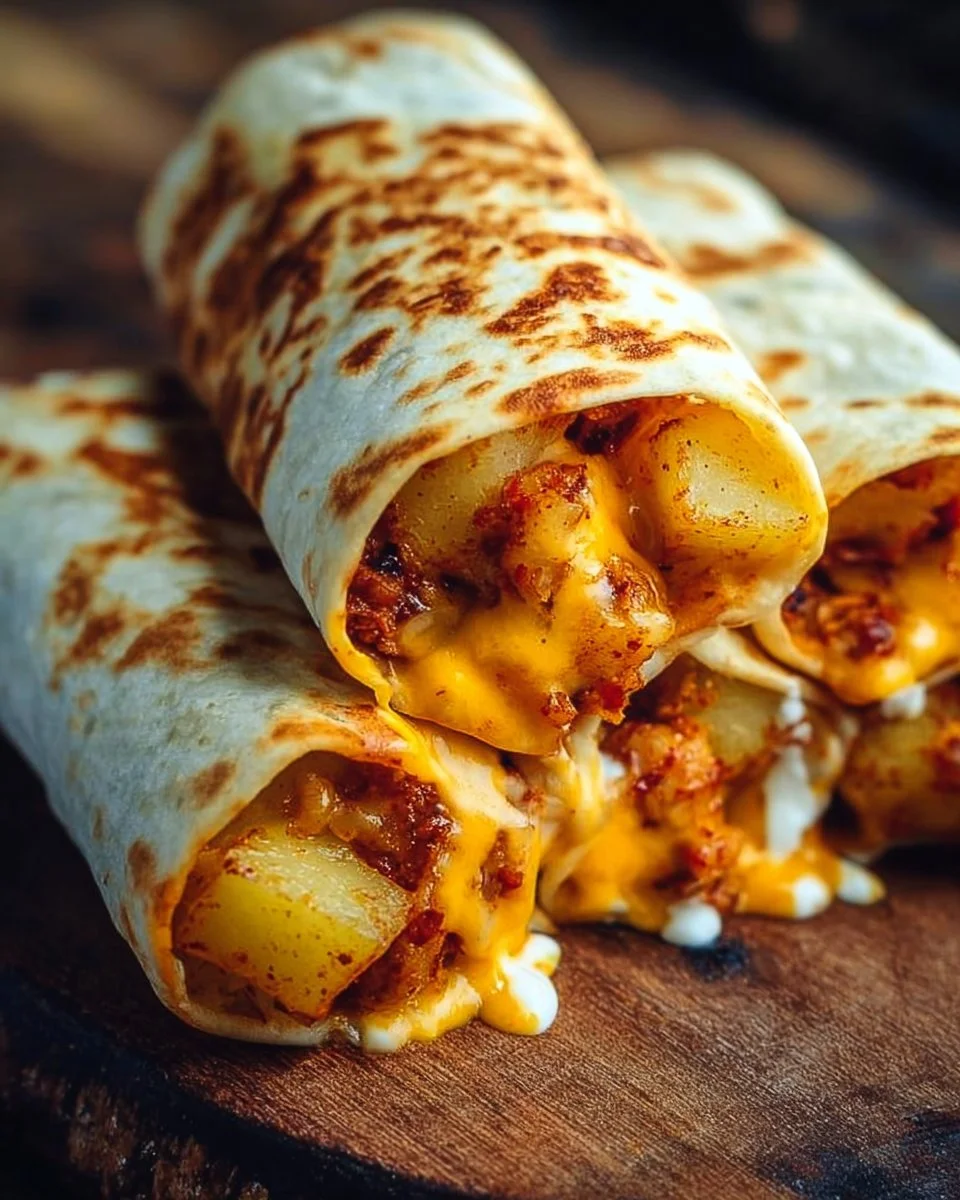
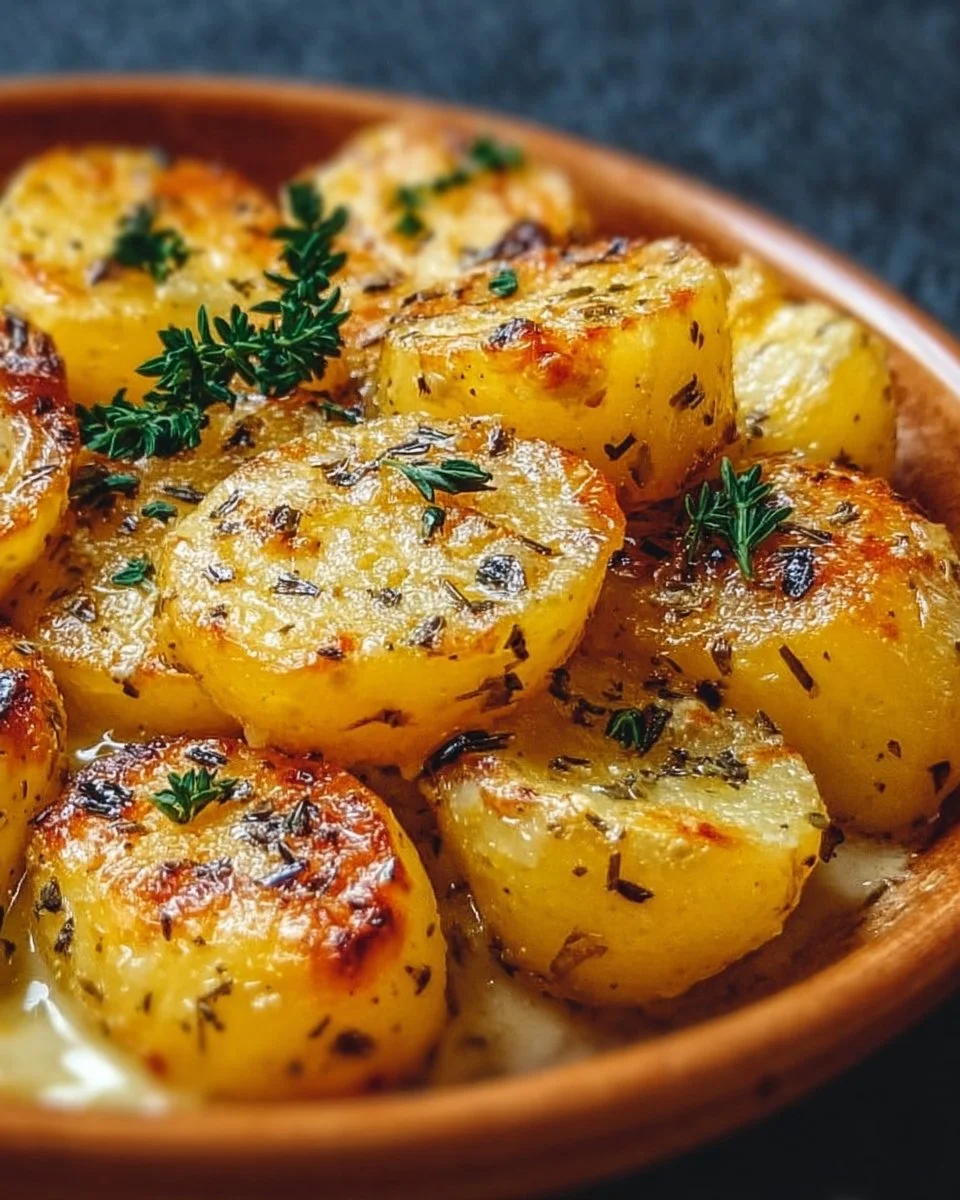
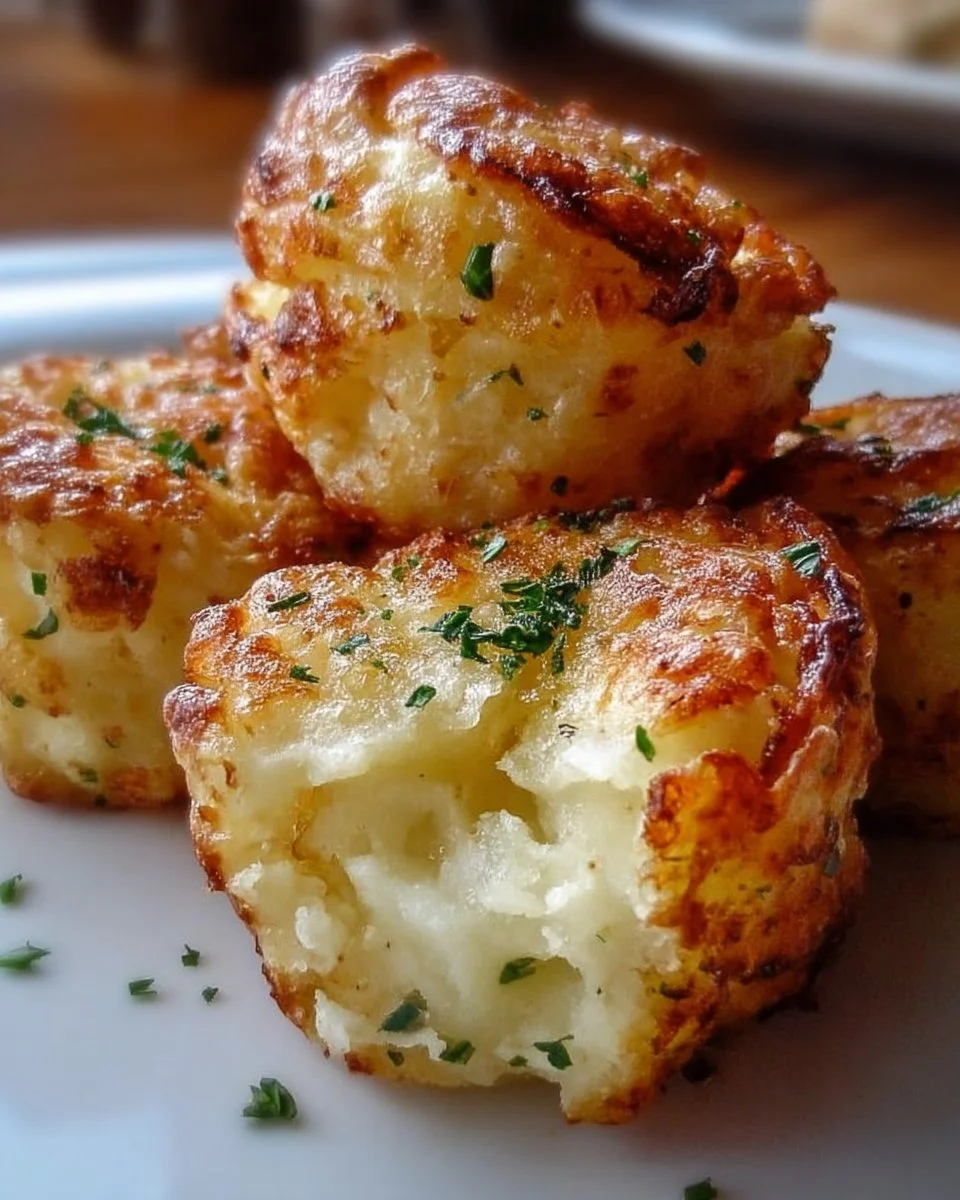
3 thoughts on “Chicken Gyoza: The Ultimate Guide to Juicy Japanese Dumplings”